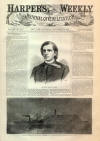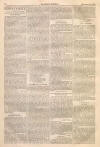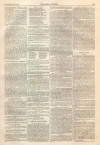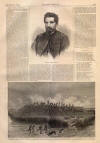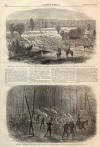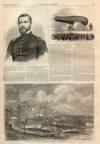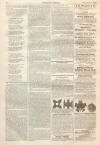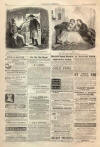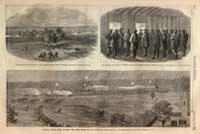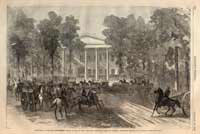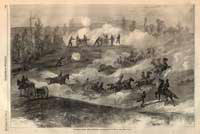Battle of Allatoona
|
|
This Site:
|
NOVEMBER 19, 1864.] HARPER'S WEEKLY. 749 MAJOR THOMAS JEFFERSON RODMAN.RODMAN 20-INCH GUN, TESTED AT FORT HAMILTON, OCTOBER 20, 1864.MAJOR RODMAN AND HIS GUN.WE publish on this page a portrait of Major THOMAS J. RODMAN, together with a view of the celebrated 20-inch Rodman Gun of which he was the inventor. Major THOMAS JEFFERSON RODMAN was born in Indiana about the year 1818, entered West Point in 1837, graduated in the Ordnance in 1841, and has ever since been one of the most useful and active officers in the corps. He obtained his Captaincy in July, 1855. He is famous for having invented a process of casting guns of enormous size hollow, and cooling them from the inside by passing a stream of water through the bore. They are known by the name of Rodman Guns. Major RODMAN is one of the greatest artillerists in the country, and is doing most excellent service at present. On the 26th of October a trial was made at Fort Hamilton of the gigantic 20-inch which Major RODMAN has given to the world. This is the largest piece of ordnance in existence, and carries a shot weighing half a ton. The trial was witnessed by a large number of persons, among whom were Major RODMAN himself, the heads of the War and Navy Ordnance Departments, and General W. F. (" BALDY") SMITH. It indicates the size of the gun that it was possible for a man to creep into it to remove some obstructions in the vent that prevented the firing of the cannon by means of a fuse. The body of the man did not fill up the gun, and he easily made his way to the charge chamber, which was three times his own length from the muzzle. The trial was only made to ascertain whether the cannon would carry a shot proportioned to its calibre ; its range will be tested at some future day. This gun was cast at the Fort Pitt Foundry, Pittsburg, taking 160,000 pounds of metal, and weighing when completed 116,000 pounds. The peculiarity of the gun is in the process by which it is cooled, as above described. The portion of the gun nearer the bore is solidified first, thus giving room for a gradual contraction of the outer portion. The carriage for the gun weighs 36,000 pounds, and was made at the Watertown Arsenal, near Boston, of which Major RODMAN is Superintendent. It has two parts. The lower part is called the chassis, and constitutes the railway on which the upper part of the carriage, which is like that of a mortar, slides along when it receives the recoil of the gun. The whole rests upon a granite foundation ; and the forward end of the chassis is fastened to an anchor-block or pier, by means of a six-inch bolt, called a pintle. From this point the carriage revolves around a semicircular traverse rail, on wheels. This rail, and also a support for the middle of the carriage, stand on granite. It is thought that the range of this gun will be five or six miles. Even the powder used for it is peculiar, the grains being said to resemble Breckinridge coal of the chestnut size. This gun is not mounted in the fort, but in the tier of 15-inch guns which extends along the embankment for a quarter of a mile below the fort, commanding the lower bay, and forming part of the defenses of New York harbor. THE DEFENSE OF ALLATOONA.WE illustrate on this page the attack made by General HOOD on Allatoona, October 5, 1864. After General HOOD crossed the Chattahoochee a force of five brigades and eight guns, under General FRENCH, attacked Big Shanty, on the Chattanooga Railroad, and succeeded in taking the place. They then moved on Ackworth, further north, which occupied them until evening. The next morning, October 5, they drove in the Federal pickets at Allatoona. This post was defended by Brigadier-General JOHN M. CORSE, who had abandoned Rome in order to prevent Allatoona, which was of far greater value, from falling into the hands of the enemy. General CORSE commanded a garrison of 1700 men. General FRENCH, the rebel commander, sent to CORSE a summons to surrender, "to avoid the useless effusion of blood." CORSE replied that he and his command were ready for the "use less effusion" as soon as was agreeable to General FRENCH. Leaving their artillery on the south side to shell the position, the rebels swung their infantry round to the north front, which was more practicable. The attack was violent and determined, and lasted until the middle of the afternoon, when the enemy withdrew, leaving 1300 killed and wounded on the field. Nearly 700 of CORSE'S men were killed or wounded. The rebels numbered about 7500 in all. They came provided with a wagon train to remove the rations which SHERMAN had accumulated at Allatoona, but they went away with empty wagons. The dead rebels had their haversacks full of uncooked black beans, sugar cane, etc. General CORSE was wounded in the head, but not seriously. Only (Next Page) GENERAL HOOD ATTACK ON THE ALLATOONA, OCTOBER 5, 1864.--[SKETCHED BY A. VAN BIBBER.]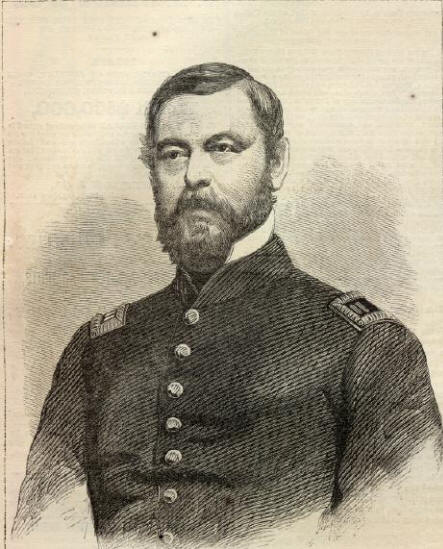 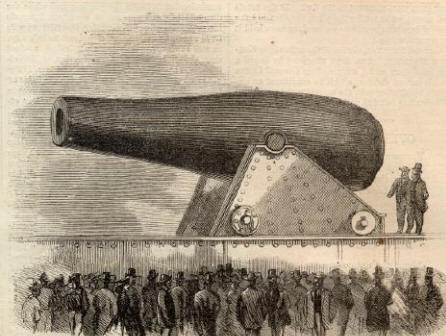 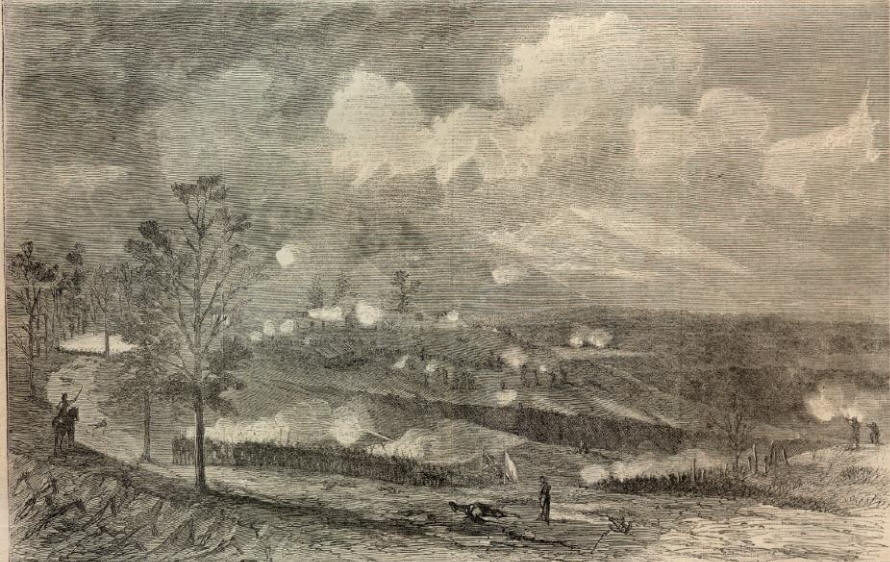 |
||||||||||||||||||||||
|
|
||
|
|
Site Copyright 2003-2018 Son of the South. For Questions or comments about this collection, contact paul@sonofthesouth.net |
|
|
Are you Scared and Confused? Read My Snake Story, a story of hope and encouragement, to help you face your fears. |
||
